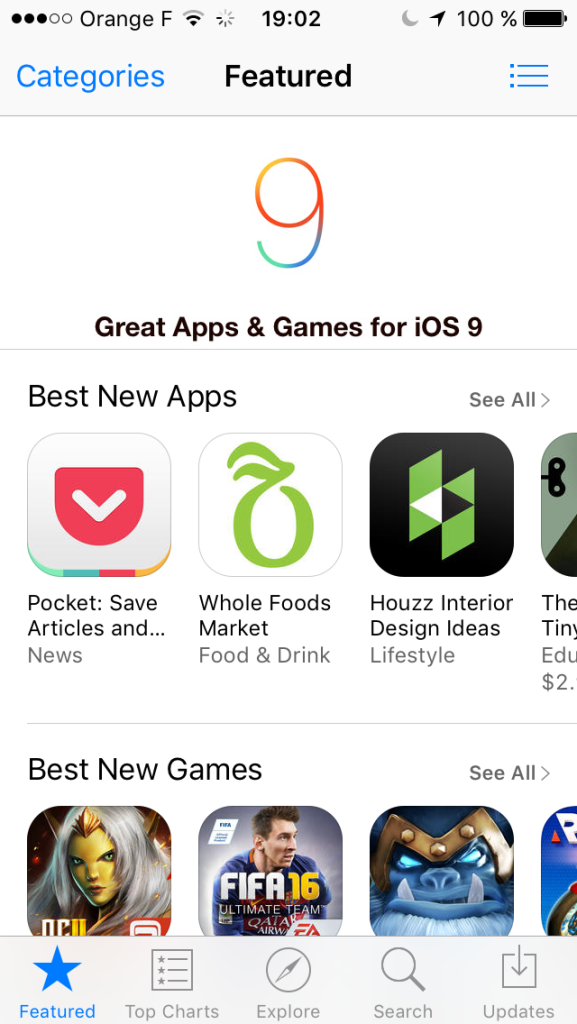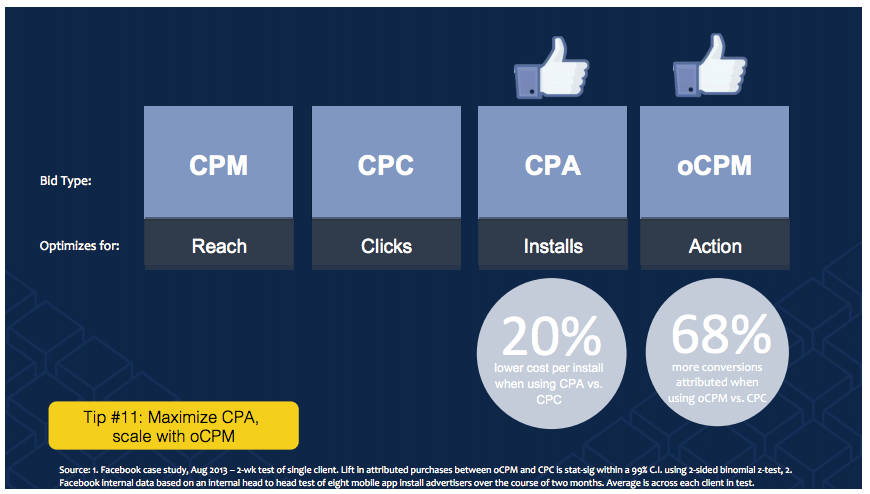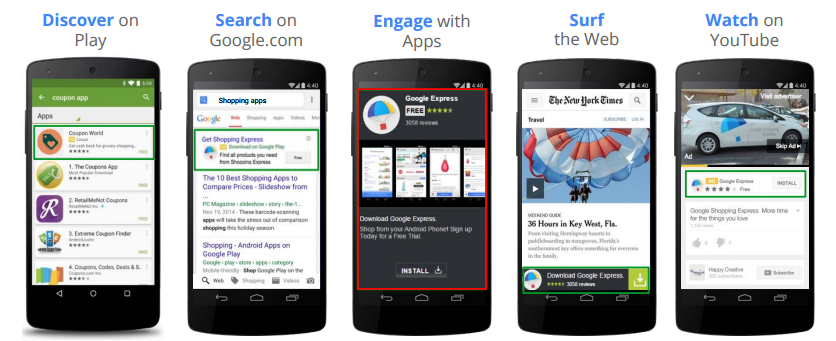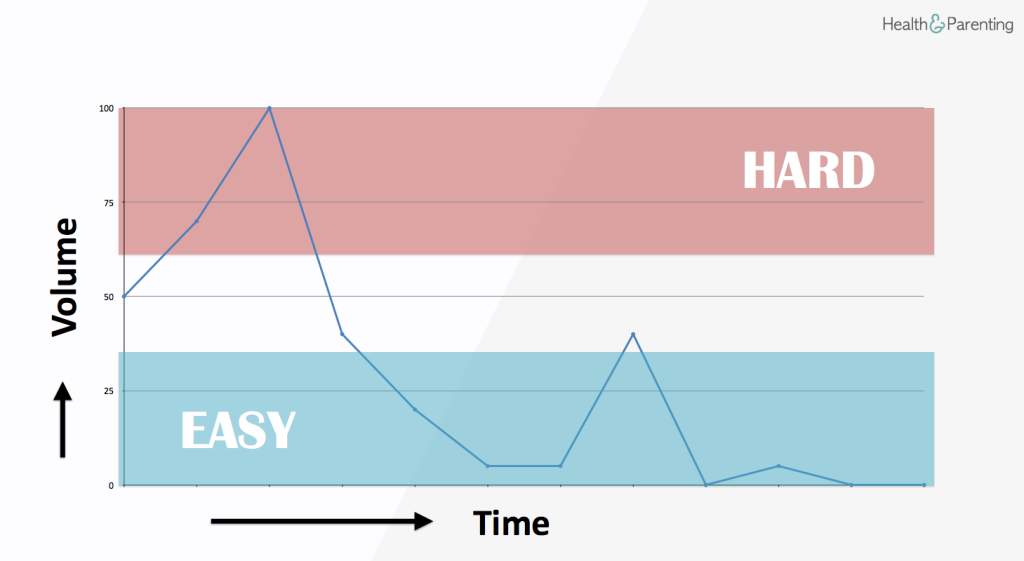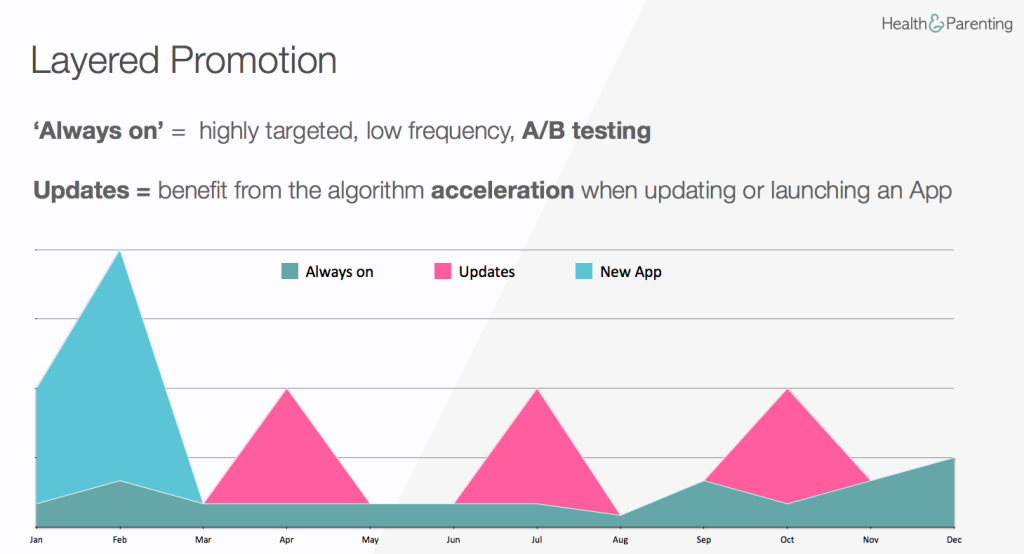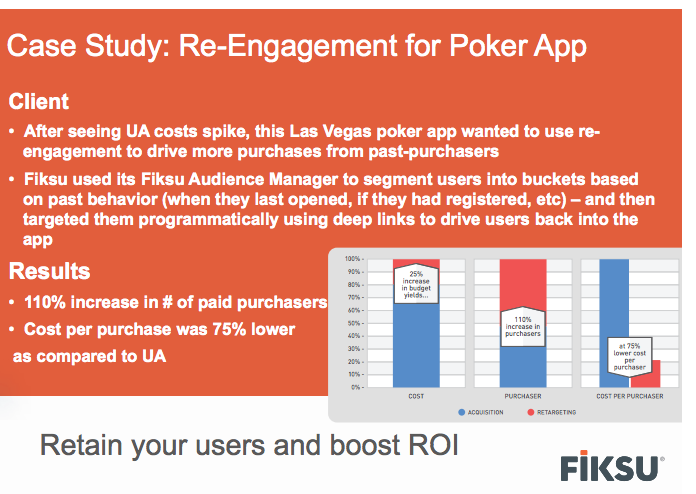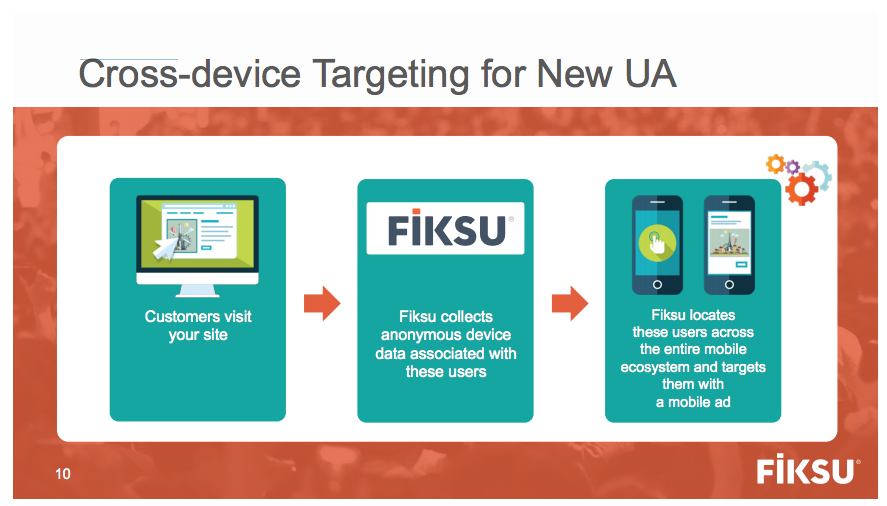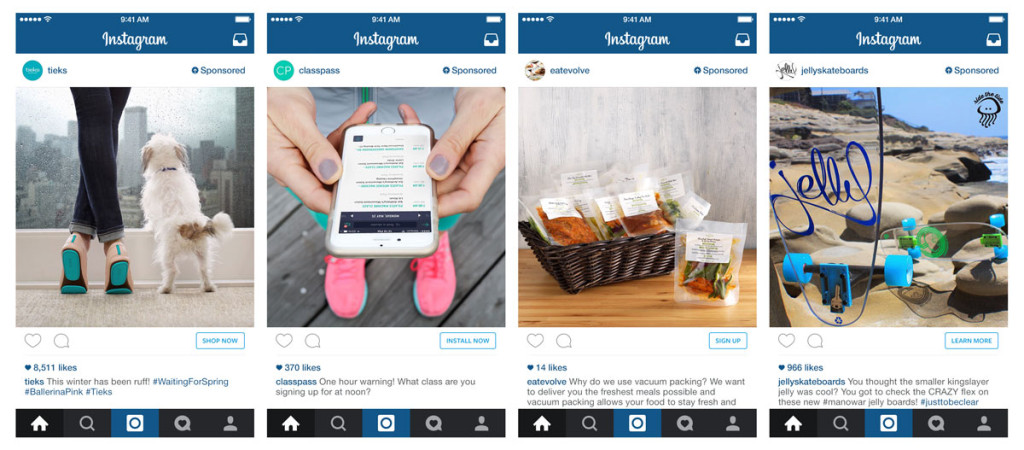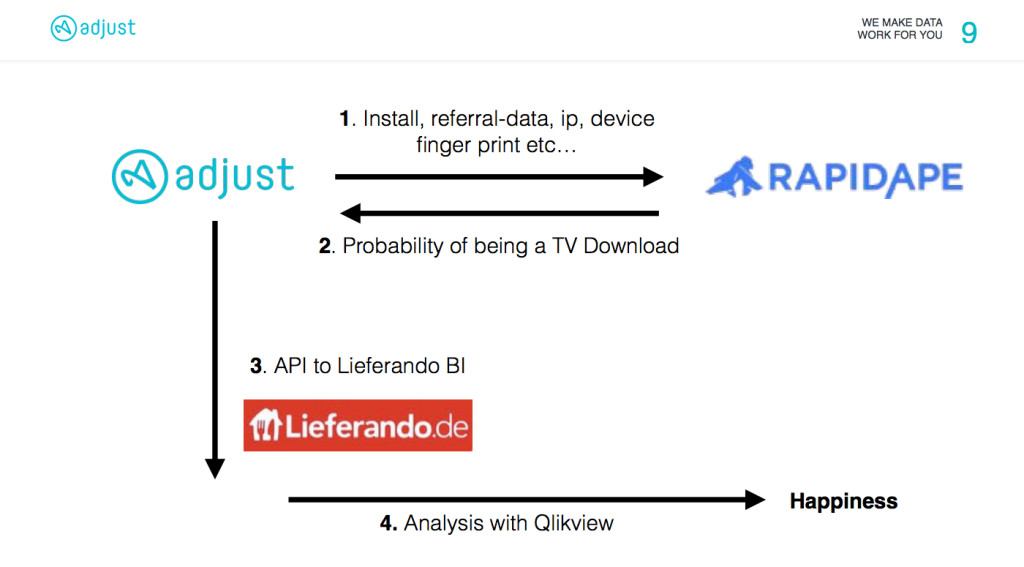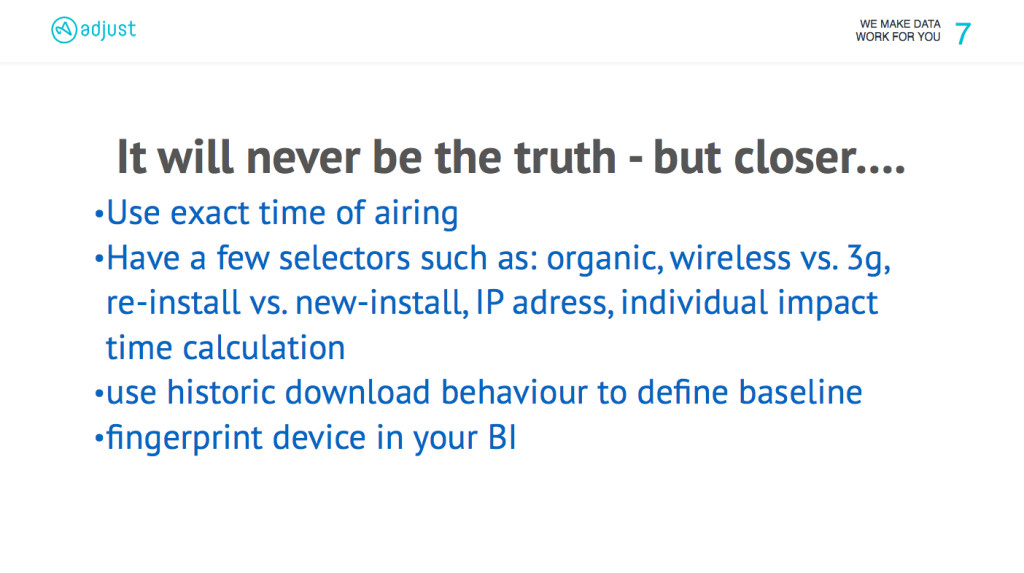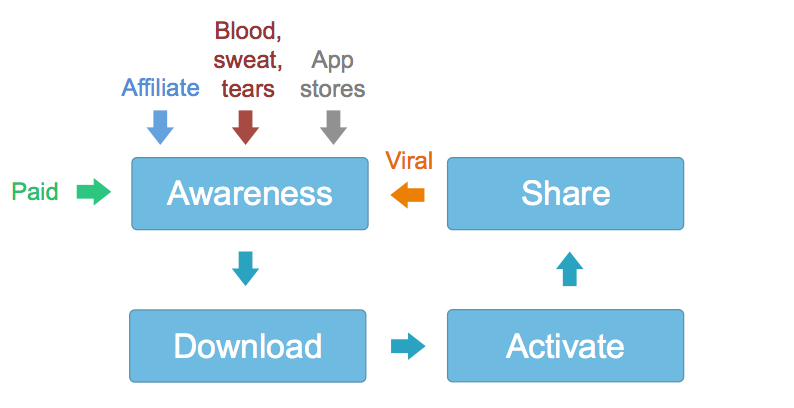What you can learn from the App Promotion Summit London 2015
Mobile App Growth
October 9, 2015
There aren’t that many conferences on app promotion and app marketing, and the App Promotion Summit is probably our favorite in Europe.
This time I got a chance to go speak at the London event, and once again there was some interesting insights shared by developers, startups and folks in the industry. So here’s our selection, along with a few additional thoughts and suggestions on some of the topics.
The next APS is in Berlin on December 3rd. Get your ticket today! You can also now watch all the presentations here.
Design for featuring
You’ve read it everywhere: you need a great app if you want to succeed long term. And there was already talks about designing for featuring at the APS London 2 years ago (check out the advices from Meaghan at 23snapps – still relevant).
This time, it’s the team from Health & Parenting that shared a few tips:
- Follow the keynote speeches and new OS features – you need to know what’s important for Apple and where you can find opportunities
- Make sure you meet the minimum requirements for featuring and include new promoted features (Apple Watch, Universal App, 64bit, new screen sizes) – respect the marketing and brand guidelines, and do your best to change/adapt/develop your app when Apple launches new devices/technologies
- Languages – make your app available in multiple languages
- Plan your time to launch – if you’re looking to be featured, avoid launching/updating when big hitters launch
At WWDC15, one of the sessions was on how to get your app in iOS 9 spotlight and Safari to gain more visibility as well as increase engagement with your app.
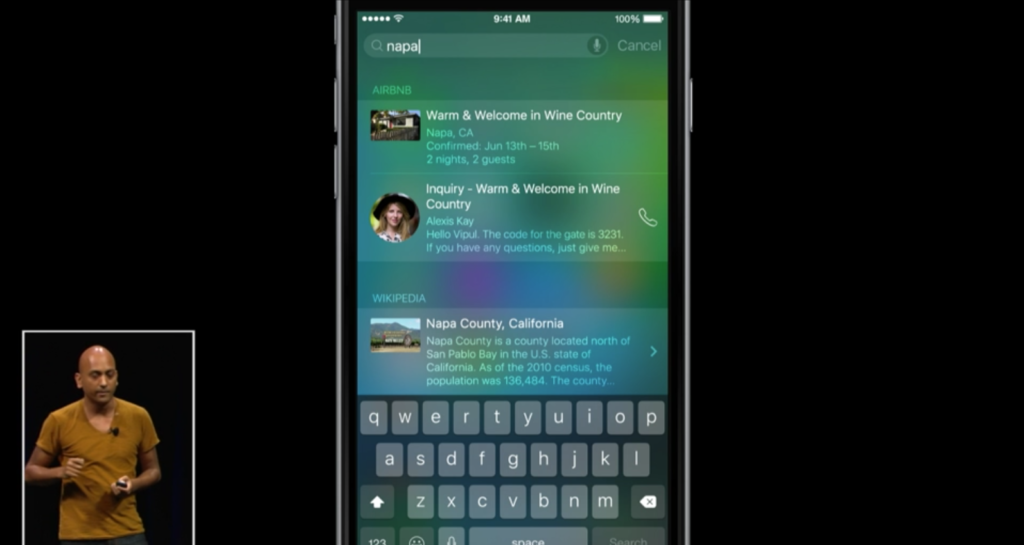
By being one of the firsts to implement this kind of things, you’re going to please both Apple and your users (by the way, Google has had something similar for a while with App Indexing). Same goes for multitasking on iPad in iOS9 or Apple Pay!
At its “Hey Siri” media event in September 2015, Apple announced the fourth-generation Apple TV which runs “tvOS”. Now it does look like quite some work but if you feel your app has its place in people’s living room (games would work well, but surely other apps too), don’t miss out on the opportunity.
Also, it never fails: each time there’s a new OS, Apple has a selection of apps about it.
A note from the morning panel: plan for features, but do not prioritize it over user experience. And hustle to get a contact at Apple (I know, easier said than done).
Test your app
Like the “you need a great app” thing, you’ve heard that before: you need to test your app. And the team of Health & parenting has been doing just that.
Health & parenting suggests the usertesting.com website, which was mentioned in a guest post on Apptamin about how to find early beta users for your app.
It’s not the only form of testing you’ll want to have but a great way to test the “quality” aspect (in-app analytics can help with quantity).
Usertesting has the advantage of letting you clearly understand what a new user experience looks like, dig deeper and adjust accordingly.
Advertising tips
There was quite a lot of content around advertising at this year’s event. After all, it’s a very important part of promoting an app and close to mandatory nowadays. Below the main takeaways.
CPA then oCPM for your Facebook ads
For your Facebook ads, Facebook recommends to maximize everything you can do on CPA (Cost per Action) and then move to oCPM (optimized Cost Per Mille).
With CPA the idea is to deliver ads to people who are really going to install, so it’s great to start with this. But to scale beyond that you want to use oCPM.
The oCPM bids on your behalf and helps with targeting by choosing the subset within the target audience you selected that is most likely to click or perform whatever action you feel is important for users to do in your app (booking something, buying things inside your app, etc.).
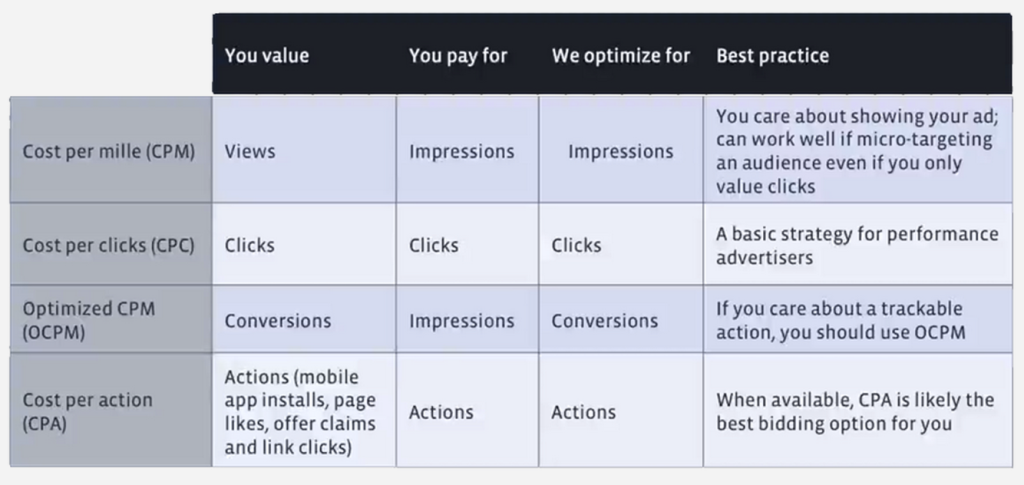
So that Facebook can provide install or app event reporting and therefore optimize for you (if you use the advanced bidding options – oCPM, CPA), you’ll need to install and use Facebook’s SDK. You will also have better insight into performance by understanding which ads drove what installs or actions.
More on oCPM best practice tips in the slideshare below (from Adespresso)
Becky Bui said that the marketers she works with are spending between 80% to 90% of their budget on oCPM.
Other tips:
- Establish an LTV model so you can optimize your bidding strategy accordingly.
- Leave your bid and budgets alone so oCPM can optimize the best way possible: it needs some time
Since the conference, Twitter also added optimized action bidding and cost per install bidding.
Targeting your audience
Ad Parlor had a quite thorough presentation 2 years ago on how to target your audience on Facebook (#4 of the advices in this post). That’s probably when I was first introduced to Facebook’s targeting:
- Core targeting – reach people based on their likes and interests
- Custom audiences – you can connect your CRM database to reach customers you already know with ads on Facebook
- Lookalike audiences – find people that are similar to your customers (thanks to the custom audiences you already have)
Becky Bui from Facebook recommends to make your Lookalikes your primary UA targeting strategy, but also suggests you keep your lookalike audience between 5k and 50k.
It seems like common sense, but avoid overlapping audiences. If someone has seen your ad many times and hasn’t taken action, it’s unlikely they will (not with the same campaign at least). If they have taken action, then you don’t want to target them with an acquisition campaign either. You want to target one audience, then exclude it from your next targeting.
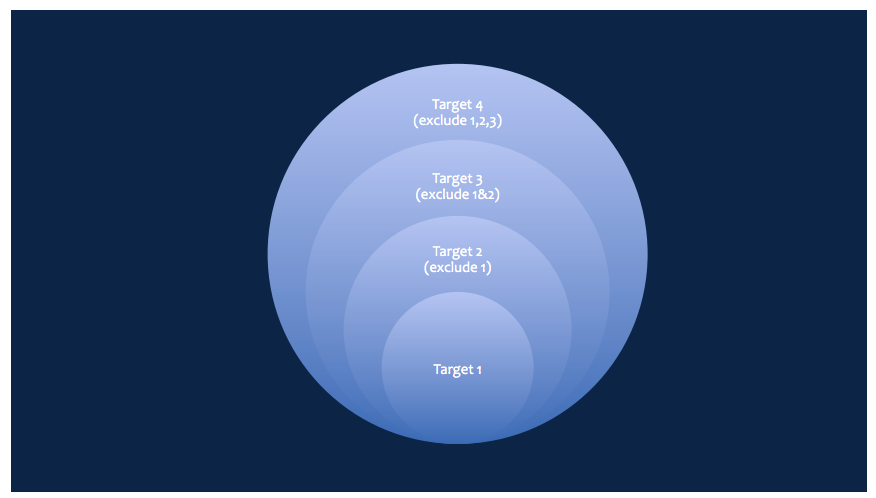
Twitter is not staying on the sidelines when it comes to ads for mobile apps. The targeting on Twitter is pretty thorough as well, and you can create lookalike audiences too.
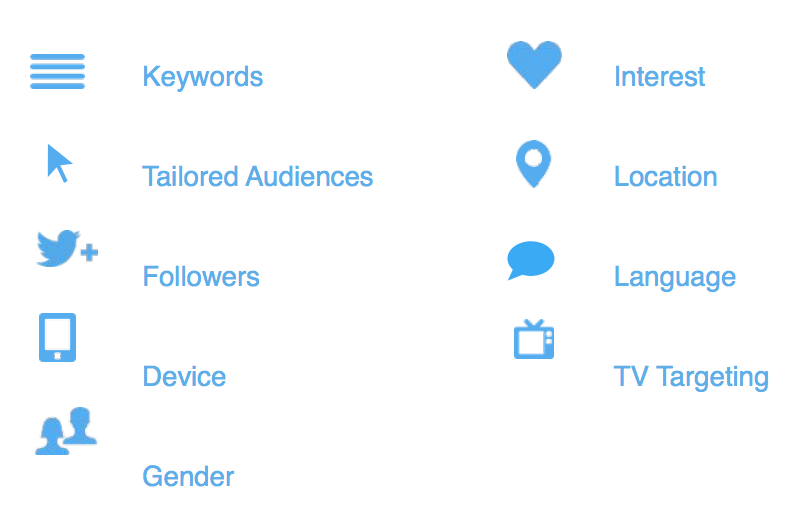
With the Twitter app graph, Twitter collects the list of apps installed on users’ devices (unless they opted out) which can be used for targeting as well.
Google is of course another major player in the mobile app install ads. From YouTube to Google and Gmail, they have plenty of data to help you target precisely and plenty of ways to distribute ads.
Negative targeting
This goes in line with what we mentioned above and excluding audiences you’ve already targeted.
The idea here is to not advertise to the people you know won’t be interested (enough) in your product or that already have your app and for whom it would be a waste of money to promote installing the app again (if they are not as engaged as you’d like, you want to use different creatives for your retargeting campaign – keep reading).

Use great creatives
Here’s another thing everyone agreed on: your creatives are a critical aspect of your ad campaign and you need to market beyond the spreadsheet.
One of the tips from Becky (Facebook) is to tell a story with carousel ads. What I’ve been seeing a lot too is the creatives of a carousel ads being “spread” on several ad thumbnails.
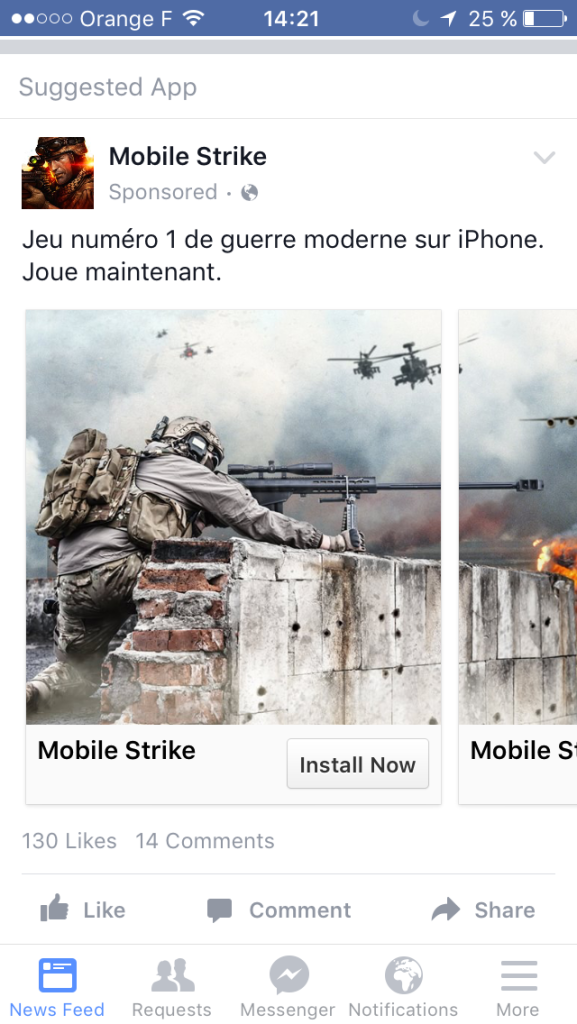
Here are some examples of carousel ads Facebook shared on their website. You can find tips to create creatives in this guest post about creating a Facebook or Twitter install ad.
For twitter, what Ross Sheil recommends is colorful visuals that catch the attention.
Whether it’s for user acquisition or retargeting, you want to customize your creatives based on your audience to make sure that the ad is as relevant as possible. You should also test out different ones to see which ones are the most effective. It’s important to rotate your ads regularly to improve the performance of your campaign.
If your audience can easily be separated in groups, you can optimize your campaigns with different creatives for each. That’s what the NFL did with their Facebook ads.
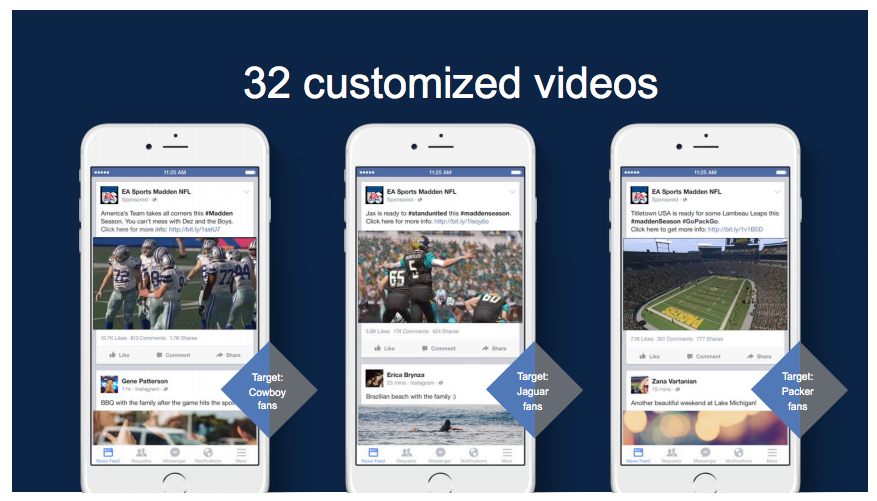
Becky says that you should use a mix of ads, for example targeting with video and retargeting with images to convert (more on retargeting below).
Regarding video ads on Facebook, here are a few links to some case studies:
- Jurassic World (Ludia Games) – 26% lower effective CPM and 36% lower cost per daily active user for video ads compared to photo ads
- Invasion (Tap4Fun) – they got very good results with carousel ads and “lightweight video ads” (slight movement, based on an image)
- Family Guy (TinyCo)
- Marvel (Kabam)
Tips on ad spending for high volumes
Running profitable campaigns at high volumes is hard, because you need to either increase the ad frequency or have less targeted ads.
You want to monitor the frequency of your ads, and avoid that the price increases too much.
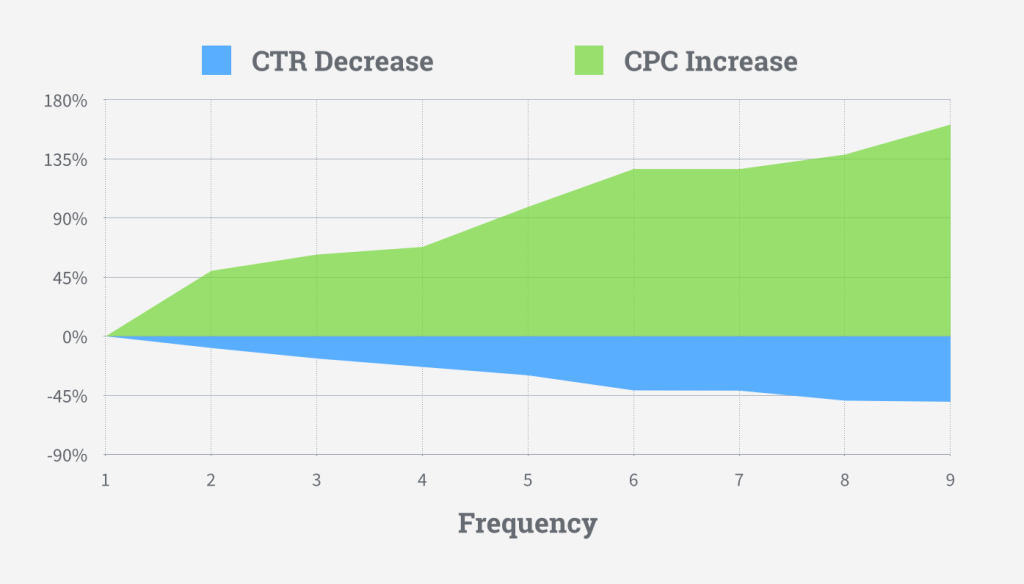
It’s interesting to see how Health & Parenting is dealing with that: with what they called “layered promotion”.
What they do is they aim for profit on “always on” campaigns and accept higher CPI’s when the goal is to reach high store rankings. Having the “always on” campaigns also allows to A/B test their creatives.
Combine UA and retargeting
User acquisition is an important part of promoting your app. But it’s not all about the download: the other challenge is to retain your customers. 95% of apps are abandoned within 1 months and 20% of apps are used once.
And that’s when retargeting comes in.
Retargeting allows you to maximize the value of your existing users (or at least users who downloaded your app already). You don’t want to use user acquisition and retargeting separately: you’ll get better results by using them together (and organic installs as well).
Diego from Jampp (an APS veteran) presented with Kabbee a case study about how they reduced CPA by 50%. The 2 more important advices where:
- Retargeting is not something “you do later”: it’s better to act right away, which means you could actually prepare it from the beginning.
- Do not only look at the key event, but optimize with every in-app event (every step of your funnel).
Kabbee worked hand in hand with Jampp, passing along their funnel (and funnel timeline) and in-app events information. Here are the segments that were defined.
One of the things they realized is that more opens from a user leads to more bookings but also that users are more likely to book a taxi within the first 5 opens. So they defined segments of users that were not active enough and started retargeting within that window.
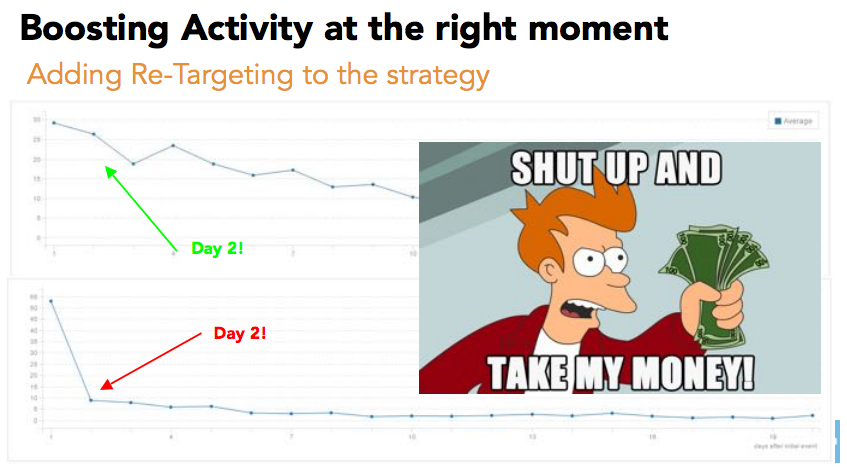
Check out Jampp’s app retargeting ebook here.
For games, you can define segments of users based on their behaviors and:
- Re-engage lapsed players (by giving them something for example)
- Promote new features
- Drive additional in-app purchases (by offering a discount for example)
Here’s a case study Fiksu did with a Poker app:
Retargeting will have more impact if you use deep links (see “deep linking” section below).
Cross-device targeting
Another way of retargeting that was mentioned by Appsflyer during the Interactive session and detailed by Fiksu is cross-device targeting for new user acquisition.
Move fast on new User Acquisition opportunities (like Instagram ads)
New advertising opportunities present themselves quite often, and it’s interesting to move fast on those to see if they are interesting for your business.
Sure, it might make it harder to get started but it also means that the advertiser will be eager to help you make the best out of the new format and that you will benefit from the “novelty” effect.
A new opportunity that was mentioned several times are Instagram ads. Instagram has been rolling out those for a few months now and they are now opened to everyone as well as serving new countries.
You can have the traditional square image format, landscape format and even 30s-long videos.
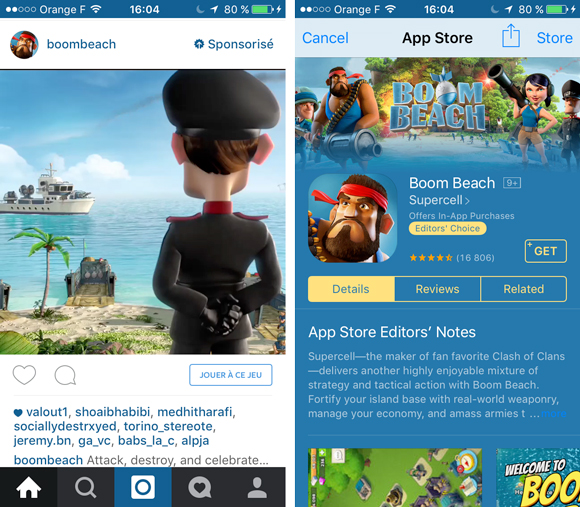
Unlike on Facebook (at the moment at least), tapping the call to action opens an “app store” download screen directly within the app (Google’s TrueView ads work the same way). Nicely done.
So if you feel it makes sense for your app, check it out: the first results seem to be pretty good.
The TV ads trend
Adjust and Lieferando shared an interesting case study on how Lieferando runs their TV campaigns for the app.
TV ads can reach a lot of people but besides the branding aspect and trust it brings, one of the challenges is to measure the results to know if it’s worth the price.
Initially, they measured the difference in downloads between x minutes before and x minutes after to get an idea of the ROI. But then they decided to use Rapidape (instead of manual excel sheets) in addition to Adjust to get individual calculation of impact times. The main reason for wanting to know the exact impact time is that in even 5 or 10mn the traffic on Lieferando changes a lot (in rush hour for example).
Between RapidApe that can automatically recognize when the ads are aired and the data from Adjust on all the new installs they can (almost) identify which installs come from which TV ad: they mix different selectors and put probabilities on them (for example someone using Wifi has more chances of being home in front of the TV, and if you exclude airport Wifi it increases chances even more, etc.).
On the new installs identified, they then do an ROI analysis by cohort. They noticed very different behaviors (and impact) depending on the spot used and very different costs per download depending on the program. So there was an opportunity for optimization, as they found out that it was not the most watched programs (where the ads cost more) that were the most interesting but rather less popular programs.
They have a custom BI tool that they use to do that, and in 2 months they managed to decrease CPI by 70% by adjusting the targeting. Interestingly, their ad was done by an intern and cost around 500€. They spent over 50 million euros on TV with it.
This is a lot of work but can be worth it, especially if you’re already doing this kind of analysis for your other acquisition channels: the “only” thing left to do is to identify which downloads come from TV ads.
I see a bright future for firms like RapidApe that can help in doing just that. If you’re looking for a partner to help you drive app user acquisition with TV, also check out QuaidMedia. And if you need help with creating a TV commercial for your app, contact us!
Deep Linking
At the App Promotion Summit in London last year Alex Jubien had a very interesting talk about deep linking, which also gave birth to this guest post.
This time it’s Will Lindemann from Branch Metrics that talked on the subject.
He explained that deep linking is a facilitator to your mobile app growth engine.
Here are a few ways deep linking can be used that he presented:
- Affiliate (create awareness) – I thought this was a really clever “win-win” partnership: Yummly allows users to “shop for ingredients” on Instacart. If they don’t have Instacart, they are taken to the app store to download it and the ingredients appear in the Instacart app on first opening.
- Emails for mobile (facilitate download) – have only a “get the app” button that automatically brings users to the right store (iOS or Android) rather than 2 buttons.
- Personalization (facilitate activation) – when HotelTonight users refer the app to someone with their referral code, the screen that opens after install is customized and reminds the new user of the offer received; still using personalization, if a gogobot user shares a list with a friend then the friend will see a preview of that list before signing up.
- Natural sharing – The League users share the app with people to move up the waitlist, and then get a “golden ticket” for one friend when they’re off the waitlist.
App Reviews & ASO
There was some talk about reviews during the morning panel. If you’re currently not doing anything about reviews (besides working on your app), here are a few advices:
- Find tools to avoid negative reviews (like Apptentive, AppBoy, etc.)
- Answer each negative review on the Google Play Store
- Flag the bad reviews on the App Store that are only based on price (Apple is supposed to take them down)
- Try to influence the wording of user reviews to improve ASO (by having users write important keywords)
Here you go, that was some of the insights we got from the App Promotion Summit 2015 in London, with some additional digging of our own. Don’t miss the upcoming one in Berlin!
- Engage, Retain, Earn: Growth Strategy for Game Apps [Based on Data] - 15 September 2022
- How to do App Store Optimization step-by-step: a full cycle of ASO in the App Store and Google Play - 9 August 2022
- The Importance of A/B Testing - 13 January 2022

